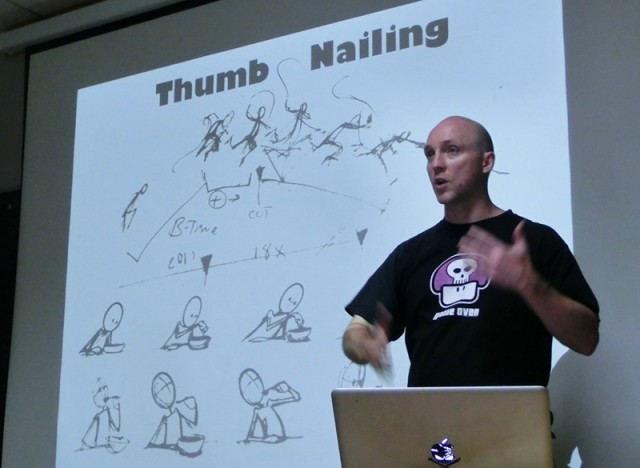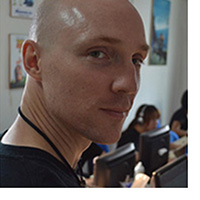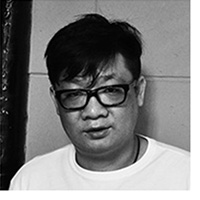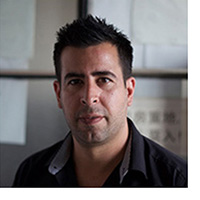Introduction 简介
With healthy budgets and creativity among brands and agencies on the rise, the Chinese commercial environment is ripe with opportunity and increasing numbers of postproduction studios are entering the market to capitalize. However, those companies should be aware that operating in China comes with significant challenges.
For this three part series, SHP+ interviewed a selection of China’s most experienced commercial postproduction leaders to discuss the industry in 2015 and what it takes to thrive in the China market. International or foreign-managed are dominating the market and provided our focus for the series, though we spoke with a number of Chinese practitioners and studio bosses along the way. Since SHP+ is focused on the craft and creativity in Chinese advertising, our primary interest was in postproduction for commercial projects, with movie VFX referenced primarily in its relationship with the commercial work.
Included throughout the article is a selection of examples of recent postproduction work done in China.
随着各个品牌和机构的预算越来越稳健,创意越来越多,中国商业环境所孕育的机会已经成熟。越来越多的后期制作公司进军中国市场赚取资本。然而,他们应该意识到,在中国运营公司也伴随着巨大的挑战。
SHP+采访了一些在中国最富有经验的商业后期制作公司的领袖,探讨2015年后期制作产业的格局以及如何能够在中国市场蓬勃发展,我们将文章分为 三部分呈现给大家。虽然我们也采访了一些中国的从业人员和工作室老板,但这次讨论的一系列重点均来自于国际公司或是外国人管理的公司,因为他们是中国市场 的主导者。SHP+关注的重点是中国广告业的技巧和创意,主要感兴趣的是商业项目的后期制作,同时也探讨了电影特效和商业作品之间的主要关系。
文章囊括了我们所精选的近期中国后期制作的一些作品实例
Part Three 第三章
Talent Crisis 人才危机
“Talent is the rarest resource in China. It sounds funny with so many people, but to find people to work on our projects is very hard.”
– Jan Heinze, Executive Producer & COO Asia, Pixomondo Beijing
“人才是中国最稀缺的资源。很多人觉得这种说法很可笑,但我们觉得找到合适的项目人才非常难。”
– Jan Heinze,Pixomondo北京,执行制片人&首席运营官
Whilst every postproduction company faces their own unique challenges, all company leaders cite the issues surrounding their artist base as cause for serious concern. Put simply, there are not enough artists to meet the demand, not only in the postproduction industry, but also in the rapidly growing, broader creative industries. This article will look at what some post house leaders refer to as the ‘talent crisis’ and the manifold and complex reasons behind it.
虽然每个后期制作公司都各自面临着各自独特的挑战,但是所有的公司负责人都指出,人才的根本问题令他们非常担忧。简而言之,不单单是后期制作产业找不到足够的人才,迅速发展壮大的创意产业也是如此。本文将带您探究什么是这些后期制作公司老板口中所说的‘人才危机’,以及这背后蕴藏的多重原因有哪些。

Happy Finish for Credit Suisse. Images courtesy of Happy Finish|Happy Finish为瑞士信贷制作的广告。图片由Happy Finish提供
 Happy Finish for LOS & CO|Happy Finish为LOS & CO制作的广告
Happy Finish for LOS & CO|Happy Finish为LOS & CO制作的广告 Happy Finish for Noritz|Happy Finish为能率制作的广告
Happy Finish for Noritz|Happy Finish为能率制作的广告
Happy Finish for River Island|Happy Finish为River Island制作的广告
Image Problem 形象问题
Despite the glamour of Hollywood VFX blockbusters on cinema screens and a flourishing domestic film and commercial industry, would-be students increasingly believe that a career in postproduction means long hours and low pay, deterring them from choosing related degrees. Vice Dean and Associate Professor of the Communication University of China’s (CUC) School of Animation and Digital Arts, Wang Lei explains, “Fewer and fewer students are enrolling in 3D classes in recent years. One hour online researching the life stories of former shows students that it is not attractive to work as a modeler, rigger, lighting artist or compositing artist.”
尽管好莱坞视觉特效大片在荧屏上大放异彩,国内的电影和广告行业发展欣欣向荣,但事实上,人们越来越相信后期制作意味着长工时低工资的工作,越来越少人愿意去学后期制作。中国传媒大学动画与数字艺术学院副院长王雷副教授指出,“近年来选择3D课程的学生越来越少。我们做了一项线上一小时的调研,看到之前的毕业生都觉得模型师、绑定师、灯光师、后期合成师这样的工作对他们来说没什么吸引力。”
The expectations of those who do enter the industry are often in stark contrast to the reality. In some particularly bad cases, Wang recounts reports of former students being taken advantage of by bosses selling them hollow dreams of being a part of the company growth or phantom future wage increases. VFX Supervisor Brian Dowrick outlines a disturbing working culture within some studios, “Western studios reward passion and loyalty, Chinese studios actually take advantage of it by offering pay cuts or longer hours to see how much the person will take before trying to leave.”
那些实际投身到业内的毕业生发现,他们所看到现实状况和本来的预期形成了鲜明的对比。王雷也指出报告中显示,尤为糟糕的是,之前那些毕业的学生一边聆听着老板讲述员工将会伴随公司的发展一起成长的空洞梦想,许诺着以后会涨工资,一边又被老板压榨。视效总监Brian Dowrick指出很多工作室的工作环境非常让人恼火,“西方工作室奖励工作中的热情和忠诚,但是有一些中国工作室实际上却见缝插针,工作时间拉长,薪水降低,考验着员工耐性,看看他们到底能待多久。”
The results of the negative stories are to the detriment of those companies that do aim to provide a fair and attractive working environment. Pixomondo EP Jan Heinze suggests that the key is to offer inspiring work and opportunities to develop, “We aim to give artists chances to work on cool projects and a fair working environment where they can really contribute. If you involve them early in the process of meeting a director or developing visuals, the more they learn, the more fun they have.”
而那些自身致力于为毕业生提供公正又有吸引力的工作环境的公司,也被这种消极的状况所影响。Pixomondo 执行制片人Jan Heinze表示,给员工提供一份有吸引力的工作的关键是,要让工作鼓舞人心,让人有发展空间,Pixomondo北京就致力于为员工提供这样的机会,“我们的目标是给制作人员提供很棒的项目机会,打造公平的工作环境,真正可以让他们发挥自身技能。如果能够尽早让他们跟导演见面,或者尽早参与视觉制作,他们就会学到更多东西,也就会更享受工作过程。”
Lack of Freelancers 自由职业者匮乏
Heinze explains that the western model of scaling up and down by drawing on a large pool of freelance talent isn’t possible in China, “It’s not like in Europe or LA where it’s easy to staff a production within a couple of days and get it rolling” because “there is no freelance mentality here. The entrepreneurial idea of working from one place to another doesn’t exist yet.”
Heinze指出,西方会找一些自由职业的制作人员,以此控制团队的规模,但是这种模式在中国不可能实现,“在欧洲和洛杉矶,你很容易在几天之内就组合一个制作团队,开展项目制作,中国则不然”,因为“中国人还没有这种自由职业的心态。中国还不存在那种哪里有工作就去哪里的做法。”
Unlike in the west, where a freelancer is highly regarded as a specialized professional, Image Unit CEO Marcus Roth explains, “the freelance status in China is not respected. He has problems communicating with his family. They ask ‘Why don’t you have a contract? Does nobody want to employ you?”
而在西方,人们都认为自由职业者是一个非常专业的职业,Image Unit的CEO Marcus Roth表示,“自由职业者在中国并不受人尊重,无法让家人理解。别人会问‘为什么不找份工作,没人愿意用你吗?”
Another reason for the shortage is purely practical; freelancers are not able to issue an invoice and there are no legal constructs for them to operate as one-person businesses. Most freelancers have to be handled in a half-legal grey area which is, as Roth explains, “uncomfortable for the company and the freelancer; both have the feeling that they are doing something wrong.”
Moreover, companies can be reluctant to work with freelancers due to a particularly prevalent, innate fear in China that artists will take knowledge to rivals.
在中国自由职业者的稀缺纯粹是由于实际问题造成的,他们无法开发票,无法作为个人业务运作,中国没有这样的法制。多数自由职业者都处在法律的灰色地带,正如Roth所说,“这让公司和自由职业者都觉得不舒服;双方都觉得好像在做不合法的生意。”
此外,国内的公司不愿意雇佣自由职业者,也是出于一种固有的恐惧,担心日后这些人在和其他公司合作时,会让竞争公司知道他们在做什么,这在中国是普遍存在的现象。
 Pixomondo for Zihua|Pixomondo为Zihua创意制作的广告
Pixomondo for Zihua|Pixomondo为Zihua创意制作的广告
 Pixomondo for Volkswagen. Images courtesy of Pixomondo.|Pixomondo为大众制做的广告。图片由Pixomondo提供
Pixomondo for Volkswagen. Images courtesy of Pixomondo.|Pixomondo为大众制做的广告。图片由Pixomondo提供
Pixomondo for Volkswagen. Images courtesy of Pixomondo|Pixomondo为大众制做的广告
In spite of the obstacles, Chinese artists are gradually beginning to go out on their own. Heinze sees it as a positive development that will ultimately benefit the whole industry because “clients will want to produce their work here because they know they will get high quality. That happens if you have a more open community where people exchange ideas and skills.”
尽管困难重重,中国的制作人员正在逐渐迈出这一步。Heinze认为这是一种积极的迹象,最终会让整个行业受益,“客户想要把制作放在中国,因为他们知道在中国会做出高质量的作品。如果人们可以相互交流彼此的想法和技能,态度更开放一些,就会有更多人愿意把项目放在中国。”
Bringing in overseas talent to fill the gaps is by no means a simple solution. With a different language and culture, and an often negative portrayal in the western media, China can be a tough sell. Bringing in senior artists, particularly those with families, is also an expensive business. Most importantly, the studio has to contend with obtaining the necessary working visas, which requires a lengthy, complex application process. Through it all is the risk that the individual will not be able to integrate with the language and culture once they arrive.
引进海外人才来填补这一空缺,绝非解决问题的简单办法。外国人来到中国面临着语言和文化差异,同时西方媒体对此事的报导也经常是负面的,这对中国来说绝非易事。引入资深人才,尤其是有家室的情况下,可是一笔昂贵的买卖。更重要的是,帮助他们办理工作签证也不容易,要经历一个冗长复杂的申请过程。就算签证办完了,外国人能否融入中国的语言和文化环境还是另一回事。
The problem is exacerbated by the notoriously tight Chinese project timelines. Once a project is confirmed, it must start immediately. International companies are able to deal with any missing roles in their China studio by sending that portion to their other offices worldwide, bringing in freelancers there if needed.
更加雪上加霜的是,中国的项目日程紧迫,这一点人尽皆知。一旦项目确定,则必须立马启动。国际公司可以从海外公司向中国公司输送相应的人才,如有需要,也可以派来一些自由职业者。
China’s alternative to freelancers is an increasing number of ‘focused skill’ companies; specialists in a particular discipline, like modeling, effects or rigging, clubbing together with their counterparts from other companies and forming small, specialized studios. The artists can operate like freelancers and their specialty gives them leverage; they can dictate the relationship, choosing the price, hours and type of work they want to do. Whether this benefits the studios is debatable, “it takes artists off the payroll that would be idle, but also makes it more expensive to keep an artist full time,” Dowrick explains, adding, “We only use them when we get a surprise project and have little time to prepare. They’re useful, but I prefer having artists that can grow with us.”
在中国,一种替代自由职业者的做法是,中国的“专业技能”公司越来越多;来自不同公司的建模、特效、绑定等特定领域的专业人士汇聚在一起,创立小型专业化工作室。这些制作人员可以以自由职业的身份工作,他们自身的专业就是自身的筹码;可以决定跟谁合作,选择自己想要的报价、工作时长、以及工作类型。这样的模式是否有利于工作室的发展还有待考究,“制作人员空闲时,我们不用付给他们工资,但是同时也使得全职雇佣员工的费用更高,” Dowrick解释说,“我们只有在接了一些意想不到的项目又没有时间准备时,才会用这些人。他们对我们很有帮助,但其实我还是更愿意制作人员能和我们共同成长。”
Phenom VFX Supervisor Sam Khorshid explains that, in reality, the situation is not so different to the west, “it’s the equivalent of the hiring and firing in the US, except that’s not culturally done here,” adding that “we tend to work with outsource teams when we need to ramp up. They will work as their own company at our studio and they’ll get a credit.”
天工异彩视效总监Sam Khorshid解释说,事实上中国的情况跟西方没那么大差异,“这跟美国的雇佣与解聘一样,只不过从中国的文化角度来讲,他们不这么做。如果我们需要更多人的话,一般会找外包团队。他们的公司会驻扎在我们工作室,我们信任他们。”
The situation is less desirable in the commercial business. Even if the small studio works in-house, using their services is technically a form of outsourcing. Clients may not be happy to learn that the company they hired did not handle the project exclusively.
但是广告行业的情况就没这么让人称心如意了。即使一些小的工作室驻扎在某个公司里,实际来讲他们提供的还是一种外包服务。如果客户知道他们找的公司并不是单独完成他们的项目的话,可能会不高兴。
Turnover, Poaching & Maintaining Stability 人才流失、企业挖人&留住人才
The conventional wisdom is that there is a high turnover of staff in China. This goes for artists jumping between companies and going out on their own to start studios. Dowrick feels that artists in China have ‘accelerated egos’ and thus don’t stay long in their jobs to hone their skills, “in the west, you work for ten years, then start a studio. In China, it’s two”. On the other hand, Khorshid reports that Phenom are in fact relatively successful in holding on to their artists, “I’ve been here four and a half years and maybe only 20% to 30% of the staff have turned over, which is very low compared to any Hollywood studio.”
人们普遍认为,中国的人员流动率很高。员工要么就是跳槽,要么就是自己单干开工作室。Dowrick 觉得中国的制作人员“越来越自我膨胀”,不会在一个工作上待很久来磨练自己的技能,“在西方,你工作个10年,之后开创自己的工作室。但是在中国,干个两年,人们就自己单干了。” 但是Khorshid指出,事实上,天工异彩在留住人才方面做的相对较好,“我来这家公司已经四年半了,人员流动率可能只有20%-30%,相比任何一家好莱坞工作室来说,这算是很低的了。”
 Phenom Films for Don’t Mess With Texas. Images courtesy of Phenom Films|Phenom Films为 Don’t Mess With Texas做的广告。图片由Phenom提供
Phenom Films for Don’t Mess With Texas. Images courtesy of Phenom Films|Phenom Films为 Don’t Mess With Texas做的广告。图片由Phenom提供


Phenom Films for the California Lottery|Phenom为加州彩票制作的广告
With a dearth of talent supply in a thriving industry, inter-company staff poaching is inevitable. The companies that provide artists with top project experience are frequently seen as talent generation sources. BaseFX CEO Chris Bremble explains, “There are a hundred companies that would like to hire one of our artists because we do a really good job of developing talent. The nature of the work we do challenges them to perform at the very highest level. Our competitors don’t have the benefit of those projects.”
然而,虽然行业发展欣欣向荣,但人才供应匮乏,因此各个公司相互挖人的情况在所难免。通常那些可以让制作人员参与顶级项目的公司都被视为人才库. BaseFX的CEO Chris Bremble解释说,“几百家公司都想从我们公司挖人,我们在人才培养方面真的很棒。我们的工作内容激发制作人员极尽发挥自己所能。我们的竞争对手的项目往往达不到这样的效果。”
The key to engendering a long-term workforce, Heinze suggests, is about recruiting artists early and educating them in-house, “Most of our hires are coming straight from universities. They start as interns, we train them up and now they’ve been here for two, three or four years.”
Heinze指出,培养长期稳定的团队的关键在于,尽早招募人才,进行内部培养,“多数员工都是大学一毕业就来了。从实习生开始做起,我们不断培养他们,现在有的人来这已经两三年、三四年了。”
In the nineties, to discourage artists from leaving, US studios would sometimes offer signing bonuses – a lump sum of cash that would need to be paid back in full if they left before completing the term of their contract. I ask Dowrick if the same strategy could work in China, “If you gave someone here 15,000 RMB, they’d leave and say ‘catch me’. Out here, whoever has the cash, has the power.” Indeed, some companies are even reversing the roles in a bid to lock staff in, “Studios are making the employees pay them. They say, ‘you give us 10,000 RMB and we’ll hold it. If you leave we keep it’”
在九十年代,为了打消员工离职的想法,一些美国工作室有时候会提供一笔签约奖金 – 这是一大笔现金,如果合约未到期就提前离职的话,需要全额退还给公司。我们在此询问了Dowrick,这样的战术是否适合中国,“在中国,要是你给谁15000块钱,他们说想走,但是会让你挽留他们。出了这个门,谁有钱,他们就找谁。”实际上,有的公司为了留住人才,甚至调换了角色,“他们会压工资。会说,‘你要付我们10000块钱,我们押着。你要是走钱就不给你了。’”


MPC Shanghai for Lynx. Images courtesy of MPC Shanghai|MPC上海为制作的广告。图片由MPC提供

MPC Shanghai for Harbin.|MPC上海为哈尔滨啤酒制作的广告
Burning Out & Rising Costs 员工精力消耗殆尽&成本上涨
The shortage may yet worsen, with artists burning out and leaving the industry. After ten years running an exclusively Chinese-staffed post house in Beijing, Chen Gang is familiar with the situation, “Artists are leaving the industry because the pay is lower and the work more difficult than they had anticipated. The Chinese post industry is unique in that the artists are very young compared to foreign studios, where you see older, more senior staff.”
制作人员精力耗尽,不想再做这一行了,这一点是情况恶化的原因。陈刚运营着一家北京后期制作公司,10年来该公司的员工都是中国人,他对情况了如指掌,“制作人员渐渐转行,因为做这一行的工资比他们预想的要低,工作难度比他们预想的要难。国外的工作室有很多年长资深的员工,与此相比,中国的制作人员非常年轻,这也是中国后期产业的特色。”
A part of the problem is what Bremble calls the ‘15 year lag’, namely, 15 years from the time the visual effects industry begins in a country, when young, formerly inexpensive artists start having families and needing greater income. At that point, wages must rise or talent will quit.
Bremble将部分原因归结于所谓的‘15年的跨度’,也就是说,从一个国家开始有视觉特效行业开始算起的15年时间,因为这段时间内那些之前年轻没有经验的员工都成家了,需要更多的收入。从这时候起,工资一定得上调,否则人才就会流失。
With an insufficient talent supply, combined with the relative strength of the Chinese Yuan, wages are being forced up and production in Shanghai is becoming at least as expensive as western countries. The danger is that clients will start shopping around for more competitive prices. Bremble warns that things must change, “If China doesn’t ramp up its training and talent development, wages will spiral out of control and it’s going to become too expensive to do work here. That is only going to benefit Korea, Malaysia, Vietnam, and Thailand where, by population, there are fewer options for artists, meaning wages will remain lower.”
由于人才供给的不足,加上人民币升值等因素,工资不得不上调,所以在上海进行制作至少已经像西方国家的一样高成本。由此也带来了危机,客户开始瞄准其他更有价格优势的市场。Bremble认为一定要未雨绸缪,“如果中国无法加强人才培养和发展,那么薪资就会急剧增长以至失控,成本过高,制片方将不会再选择中国制作。这样只会让韩国、马来西亚、越南、泰国这些国家受益,按照人口基数,这些地方制作人员的选择没那么多,所以薪资水平仍然很低。”
Education 教育
Chinese young people are not helped in their creative development by the system of education at primary and secondary level, a rote learning approach that does not nurture critical, independent thinking. Students that have been drilled to simply memorize facts from a young age become accustomed to being told precisely what to do.
中国的小学和中学教育体系并不鼓励学生的创新思维,死记硬背的学习方法遏制了年轻人的批判性思维和独立思考的能力。学生们从小就是死记硬背,已经习惯了一点不差地按照别人说的去做。
China boasts several world-class art universities and institutions, but also a significant proportion that falls below the requisite standard and breadth of training. Storytelling and character performance are typically weak areas. Students often enter into higher education and the industry lacking the culture of pro-active self-education needed to fill the gaps.
中国确实有几所世界级的艺术院校,但是在很大程度上,都没能达到必要的标准,没有知识的广度。讲故事和角色动画是中国典型的短板。学生们进入大学,或者步入工作岗位时,所处的文化氛围缺乏积极自主性,他们不知道要自学来弥补自身的差距。
Having led numerous teams and run an animation school, Dowrick sees the shortcomings of many emerging artists, “Graduates don’t realise the underlying reason why the character does what they do. They take what I say and follow it exactly. If I say change frame 25 and frame 30, they will do it, but they won’t change the frames in-between.”
Dowrick曾经带过很多优秀的团队,也办过动画学校,他注意到很多年轻的制作人员都有这样的缺点,“刚毕业的学生不知道角色做出某个动作背后的根本原因。只会按照我说的去做,丝毫不差。我说把25帧和30帧改改,他们就只会改这两帧,中间那些帧动也不动。”
Employers also report issues of graduates unprepared for highly collaborative work, partly attributable to a competitive, individual-focused education system with relatively fewer group projects. “The ramp up process to get people working closely in a team here is longer and harder. It takes a lot of training,” explains Khorshid.
一些雇主也指出,刚毕业的学生无法参与到对团队合作要求很高的工作中,部分原因要归结于中国的教育体系,学生之间相互竞争,以个人为中心,缺乏团队项目。Khorshid解释道,公司就要投入更多的时间和资金来培训这些人,“加强员工的团队紧密合作,通常这是一个很漫长很艰苦的过程。需要大量的培训。”
Compounding the issues, Dowrick suggests, is the perception of the nature of animation, and the reasons many young people enter into the profession. He believes the art form is often seen as a mechanical, rather than creative profession, “People think you can train animators in a week, like a factory worker”, something he ascribes to China’s ingrained ‘manufacturing mentality’.
Dowrick也指出,人们对动画本质的观念,还有年轻人进入动画产业的初衷都是问题恶化的原因。他觉得中国人通常都不认为艺术形式是一个需要发挥创意的职业,相反,人们觉得它是很机械化的,“人们就觉得培养动画师,就像培训工厂工人似的,一个星期就行”,他将此归因于中国根深蒂固的“制造业思维”。
However, company leaders note a strong will among young Chinese artists to break free from this mindset to become creative artists. Wayne England, Phenom Executive Producer, recounts his experience during a recent lecture at Wuhan University of Technology, “I suggested to every student in the audience that it was simply a decision for each of them to individually choose to define themselves as an innovator. To my welcome surprise, the entire room spontaneously erupted into applause and smiles.”
然而,大多数公司负责人都注意到,年轻的中国制作人员都想打破这种思维定式的束缚,成为创意人才。天工异彩执行制片人Wayne England近期在武汉理工大学进行了一场演讲,他回忆起自己的经历,“我向在座的每一位学生提议,到底你自己是不是一个创新者,这其实就取决于你自己是否想成为这样的人。让我意想不到的是,所有听众立刻爆出热烈的掌声,脸上都露出笑容。”

Brian Dowrick, Animation Director & VFX Supervisor, teaching at the Bai’An Animation Training school, an institution he founded in 2009|动画导演和视觉总监Brian Dowrick在Bai’An动画制作学校授课。该学校由Dowrick于2009年成立
Developing Artists 人才发展
To address the urgent need to encourage more artists to enter the industry, leaders are taking action. Post Production Office are working with the Zhejiang Media University to develop an industry focused training program, while BaseFX have announced plans to build a high-end training base in Beijing. Bremble explains, “the goal is how to build careers for professionals because China is ready for that moment. We initially stayed away from training on scale because we didn’t think that there would be enough companies that would pay well enough to justify investing in a career. Now the industry getting healthier, I think that will change.”
The training school is both a benevolent move to help artists, and a pragmatic measure to ensure their production team is not constantly seen as a talent generation source.
为了应对培养新的艺术家的迫切需求,行业领袖也纷纷采取行动。PO朝霆已经和浙江传媒大学展开合作,共同开发以行业为导向的培训项目,BaseFX也已宣布要在北京打造一个高端培训基地。Bremble解释道,“我们的目标是要为从业人员打造自身的职业生涯,中国现在已经做好准备了。最初我们觉得当时没有足够多的公司愿意花更多的钱聘用这类经过职业培训的制作人员,所以我们的培训规模很小。但是现在产业界格局更健全了,我觉得情况也会随之改变。”
培训学校不仅仅有益于制作人员自身的发展,同时也可以确保BaseFX的制作团队不会总被别的公司当做人才库,这是防止人才被挖走的实际措施。
Bremble believes top-level western experience combined with Mandarin-speaking ability is the golden combination needed to develop the domestic industry, “Take an artist that has worked overseas and come back with knowledge and skills, multiply that by a thousand, and you start seeing how this industry becomes viable.” As such, the school aims to provide students with opportunities to work abroad.
顶级的西方经验,加上汉语表述能力,正是发展国内后期制作行业所需的黄金组合,Bremble解释道,“制作人员在国外工作过,带着所学到的知识和技能回到国内,如果能有一千个这样的人才的话,我们就能看到这个产业真的可以运作起来了。”正因如此,他所创办的培训学校会给学生提供在国外工作的机会。
Base’s target is to start recruiting from the students graduating from university in the late spring of 2016. Bremble urges patience and emphasises that the standard of teaching must be even better than world leading western schools because “a student there has probably got a pretty good art education already.”
BaseFX的目标是从2016年春末开始校园招聘。Bremble督促人们要有耐心,并且强调他们的教学标准甚至要超过世界领先的西方学校的水平,“西方的学生可能已经接受了良好的艺术教育,(中国则不然)。”
All students will undertake a paid internship upon graduation, giving them time to consider in which area they would like to specialize and, critically, ensure they will be able to manage the emotional and creative stresses of the business. Bremble outlines the rationale, “how do you develop resilient talent that won’t burn out at 27 and leave? Companies need to feel that if they invest in that person, it’s a relationship that will carry on for years.”
所有毕业生都是带薪实习的,这也让他们有时间思考自己想要深入往哪个专业领域发展,而且关键是要保证他们可以应对工作中的精神压力,发挥创意。Bremble解释了这样做的基本逻辑,“怎么样才能培养有韧性的人才,不会让他们在27岁的时候就精力耗尽,想要离职?公司应该意识到,投资人才其实是可以让雇主和员工的关系延续很多年的。”
Pixomondo for Huayi Brothers |Pixomondo为华谊兄弟制作的短片
Pixomondo for Alibaba Pictures|Pixomondo为阿里巴巴影业制作的短片
Conclusion 结论
Years of broken promises and subsequently disillusioned artists have given postproduction in China a bad name.
It is easy to cast blame on the education system for the shortage of talent, and there is no doubt that there is significant room for improvement in standards at many institutions. There are too many sub par training schools and programs that would prefer to grab quick money than properly, fully educate artists in preparation for a long-term career. But, in any country, widespread improvement in education is a slow process and the ‘talent crisis’ is an immediate problem.
多年以来,许下的承诺无法兑现,由此导致人才幻想破灭,这让中国的后期制作产业声名狼藉。
我们很容易把人才的匮乏归因于中国的教育体系,确实诸多学校的标准都有很大的提升空间。有太多的低水平培训学校和机构都把心思花在快速赚钱上,没心思做教育,不会去想怎么能让这些接受培训的人能做好长期的职业准备。
The international posthouses with relatively fewer numbers, particularly those doing short term commercial work, agree that it would be preferable to employ local artists, but the degree to which they are willing to invest in the long-term sustainability of the local industry varies. Some are tackling the root causes of the issue by developing training programs, whilst others are content to ride the wave as best they can with what they have, importing foreign staff or sending work to other shops worldwide where necessary.
规模相对较小的国际化后期制作公司,尤其是那些专注于短期商业项目的公司,都一致觉得他们更愿意雇佣本地制作人员,但是到底愿不愿意投入资金来维护本地产业的长期可持续发展,做法就因人而异了。一些公司不断开展培训项目,借以解决行业面对的根本问题,也有一些公司竭尽所能乘风破浪,有的项目引入一些国外员工,必要时也会把工作外包给世界各地的制作公司。
The burden then falls to the companies that are heavily invested in the Chinese industry, that rely on a local, lower-cost talent base to keep their work competitive. A handful of companies are already taking the lead in inspiring and nurturing a new generation of artists. The future sustainability of the Chinese postproduction industry hinges on their success.
那些在中国后期产业砸下重金,需要依赖本土低成本的人才才能保持自身竞争力的公司,也肩负着重任。为数不多的几家知名公司首当其冲,激励并培养新一代的人才。中国后期制作产业在未来能否实现可持续发展就取决于这些公司的成功与否。
Parts One and Two of Commercial Postproduction in China are at the links below:
- Commercial Postproduction in China – Part One: Landscape | 中国的商业化后期制作格局 - 第一个部分: 格局
- Commercial Postproduction in China – Part Two: Clients | 中国的商业化后期制作格局 - 第二个部分:客户篇
Contributors 参与者
 Jan Heinze
Jan Heinze
Executive Producer & COO Asia, Pixomondo | Pixomondo 亚洲区执行制片人兼首席运营官
Jan Heinze joined Pixomondo in Germany in 2000 and played a key role in the establishment of their Beijing studio in 2009. He has since been undertaking strategic and operational management for the company in Asia, with a focus on the Chinese market, taking on roles including business development, facility development and integration, project management and intercultural communication.
Jan Heinze于2000年加入Pixomondo德国工作室,并且是促成2009年北京工作室成立的关键力量。此后便一直负责亚洲区的战略与运营管理,其主要工作重点是针对中国市场,承担的责任包括:商业开发、设备开发和集成、项目管理和跨文化沟通。
Pixomondo is an international creative design, media production and visual effects studio, best known for award-winning visual effects work. The company maintains a diversified portfolio of business activities including corporate communication, interactive digital content, live events, theme park entertainment experiences and original IP. Pixomondo China operates in Beijing and Shanghai to serve the domestic film, entertainment and advertisement industry.
Pixomondo是一家集合了创意设计、媒体制作和视觉特效的国际化工作室,最为人熟知的当属其视觉特效获奖 作品了。公司业务涵盖了多种多样的商业活动,包括企业传播、交互式数字内容、现场活动、主题公园娱乐体验以及原创IP。Pixomondo中国在北京和上 海均设有工作室,旨在为中国的电影、娱乐以及广告行业提供服务。
 Brian Dowrick
Brian Dowrick
Animation Director & VFX Supervisor| 动画导演兼视效总监
Brian Dowrick has twenty years animation experience, including twelve years with Rhythm & Hues and almost ten in China, during which time he has run his own training school and led animation departments for five studios in Beijing.
Brian Dowrick在动画行业已有20年的从业经验,曾在Rhythm & Hues工作过12年,而且在中国待过近10年,在此期间,他还开办了自己的培训学校,而且在北京担任五家工作室的动画部门负责人。
 Chen Gang 陈刚
Chen Gang 陈刚
Founder & Director, Cgfish Beijing|Cgfish北京创始人、总监
Chen Gang is a VFX artist, director and producer with over ten years experience, entirely in the China market. He founded Cgfish in 2003.
陈刚既是一位视效艺术家,同时还是导演和制片人,在该领域有着十多年的经验,而且完全是在中国的市场领域。他于2003年创立了Cgfish公司.
Cgfish is a Beijing company founded in 2003, offering high-end animation and visual effects work for commercials, events and television.
Cgfish是一家北京公司,成立于2003年,专注做广告、活动和电视相关的高端动画和视觉特效。
 Chris Bremble
Chris Bremble
Founder & CEO, Base FX | Base FX创始人兼首席执行官
Chris Bremble founded BaseFX in 2006 in Beijing and has since guided the company to create visual effects for over 150 movies and television series from both Hollywood and China.
Chris Bremble自2003年起来到中国,并于2006年在北京创建BaseFX,此后,他带领公司为好莱坞和中国打造了150多部影视作品的视觉特效。
BaseFX is an award-winning high-end visual effects company with offices in Beijing, Wuxi and Xiamen serving the film, television and commercial industries, with 450 full time artists and staff. The company has struck up a strategic alliance with Hollywood visual effects company Industrial Light & Magic (ILM) and content agreements with Tencent.
BaseFX是一家高端特效公司,曾获得过多个奖项,在北京、无锡、厦门均设有办公室,总共有450名全职艺术家和员工,该公司专注于影视行业和广告行业。且已开始和好莱坞特效公司工业光魔搭建起战略联盟,而且已经和腾讯签订了内容协议。
 Steven Marolho
Steven Marolho
General Manager, MPC Shanghai | MPC上海总经理
Steven Marolho has been executive producing visual effects for over ten years, first coming to China in 2009 as EP for Smoke & Mirrors before joining Technicolor in 2012. He has been General Manager for MPC Shanghai since they opened for business in January 2015.
Steven Marolho十多年来一直担任视觉特效制作的高管,2009年他来到中国,最初担任的是Smoke & Mirrors的执行制片人,后于2012年加入特艺。自2015年1月MPC上海工作室创立以来,他便一直担任总经理。
MPC, a Technicolor company, has consistently won the highest industry awards for both their commercial and feature film work, having a hand in numerous household-name blockbusters. Headquartered in London, the company has facilities in ten locations worldwide, most recently opening a studio in Shanghai.
MPC隶属于特艺(Technicolor)集团,不论是在广告还是电影方面,这家公司一直都是行业内诸多最高奖项的得主,很多家喻户晓的大片都有MPC的参与。MPC总部位于伦敦,全球总共开设了十家公司,包括最近在上海新开设的工作室。
 Marcus Roth
Marcus Roth
General Manager, Image Unit | Image Unit(上海)总经理
Marcus Roth has been managing VFX and visual production studios for over 25 years. He has over ten years experience in China, including four years as General Manager of Pixomondo Shanghai before co-founding Image Unit in 2013.
Marcus Roth有着超过25年的视觉特效和视觉制作工作室的管理经验。在中国也有着10多年的经验,其中有四年担任Pixomondo上海总经理,之后在2013年与人共同创立了Image Unit。
Image Unit focuses on visual design, high-end CGI and visualization located in Shanghai, serving clients in China and around the world. The company has just opened a facility in Stuttgart to serve their German clients.
Image Unit位于上海,专注于视觉设计、高端CGI和可视化业务,服务对象包括中国客户和全球客户。该公司近期又在德国斯图加特创立了工作室,从而可以为德国客户提供服务。
 Amanda Wu
Amanda Wu
General Manager, Post Production Office (PO) | PO朝霆总经理
Amanda Wu is a Shanghai native with ten years experience in marketing and project management positions including four as General Manager of Post Production Office Group.
Amanda Wu是上海人,有着十年的市场营销和项目管理经验,其中有四年是担任PO朝霆集团的总经理。
Post Production Office (PO) is one of Asia’s largest and longest running postproduction companies offering CG, visual effects, offline and online editing through to color grading for commercials, television and film. Established in 2003 in Hong Kong, the company has since expanded to offices in Shanghai and Beijing, recently adding two more in Hangzhou and Taiwan.
PO朝霆专注于广告和影视CG、视觉特效、离线剪辑和在线剪辑以及调色。该公司于2003年在香港成立,后来又拓展到上海和北京,近期又在杭州和台湾开设了工作室。
 Billy Becket
Billy Becket
Managing Director & Executive Producer, Fin Design + Effects, Shanghai | Fin Design + Effects上海 总经理&执行制片人
Billy Becket has been the Managing Director of Fin Design + Effects Shanghai since the office opened in September, 2014. Originally from New York, Billy was a producer for some of San Francisco’s top ad agencies prior to joining the Fin’s Sydney team in 2005.
Fin Design + Effects上海办公室自2014年9月成立以来,Billy Becket就开始担任总经理。Billy来自于纽约,此前曾在几家旧金山的顶级广告机构担任制片人,后于2005年加入Fin Design + Effects悉尼公司。
Fin Design + Effects is a boutique design and VFX house based in Surry Hills, Sydney and Shanghai, China. Established in 2001, Fin is home to Australia’s most highly awarded, close-knit team of VFX artists, designers and producers.
Fin Design + Effects是一家精品设计及视效公司,在悉尼Surry Hills和上海均有办公室。该公司于2001年成立,很多在澳大利亚获得过最高奖项的视效师、设计师和制片人都在此任职,团队紧凑有致。
 Sam Khorshid
Sam Khorshid
VFX Supervisor & Creative Director, Phenom Films |天工异彩视效总监兼创意总监
Sam Khorshid has spent 15 years in the entertainment industry, including five in China, working in feature film, commercials, television, ride films and games. He has worked on such feature films as 2012, Alice in Wonderland, Iron man, and Kung Fu epic Flying swords of Dragon Gate Inn.
Sam Khorshid在娱乐产业已有15年的经验,其中还包括在中国工作的5年,他的业务领域包括电影广告、电视、动感电影和游戏。参与的影片包括《2012》、《爱丽斯梦游仙境》、《钢铁侠》,以及功夫片《龙门飞甲》。
 Wayne England
Wayne England
Creative Director, Ride Film & Commercials Director, VFX Supervisor & Producer, Phenom Films | 天工异彩创意总监、动感电影与广告总监、视效总监兼制片人
Wayne England is a CG and VFX artist with over 20 years industry experience, now serving as Creative Director, Ride Film & Commercials Director, VFX Supervisor and Producer for Phenom Films, moving between Beijing and Los Angeles.
Wayne England是一位CG和特效艺术家,已有20多年的从业经验,现任天工异彩的创意总监,同时还是动感电影与广告总监,视效总监兼制片人,他经常往返于北京和洛杉矶之间。
Phenom Films, based in both Beijing and Los Angeles, is the largest privately owned production company in China. The studio offers a complete start to finish post production solution including award winning VFX operations for major motion pictures, commercials and game cinematics. Phenom also specializes in stereo interactive ride films and immersive themed installations.
天工异彩在北京和洛杉矶均设有工作室,它是中国规模最大的私有制作公司。可以提供从头到尾的全套后期制作解决方案,该公司为很多大电影、广告和游戏电影艺术制作的多部视效作品都得过奖。立体交互式动感电影和沉浸式主题装置也同样是他们的专长领域。




 BAM Music Library Brings Edgy, Indie Sounds to Chinese Creatives
BAM Music Library Brings Edgy, Indie Sounds to Chinese Creatives
